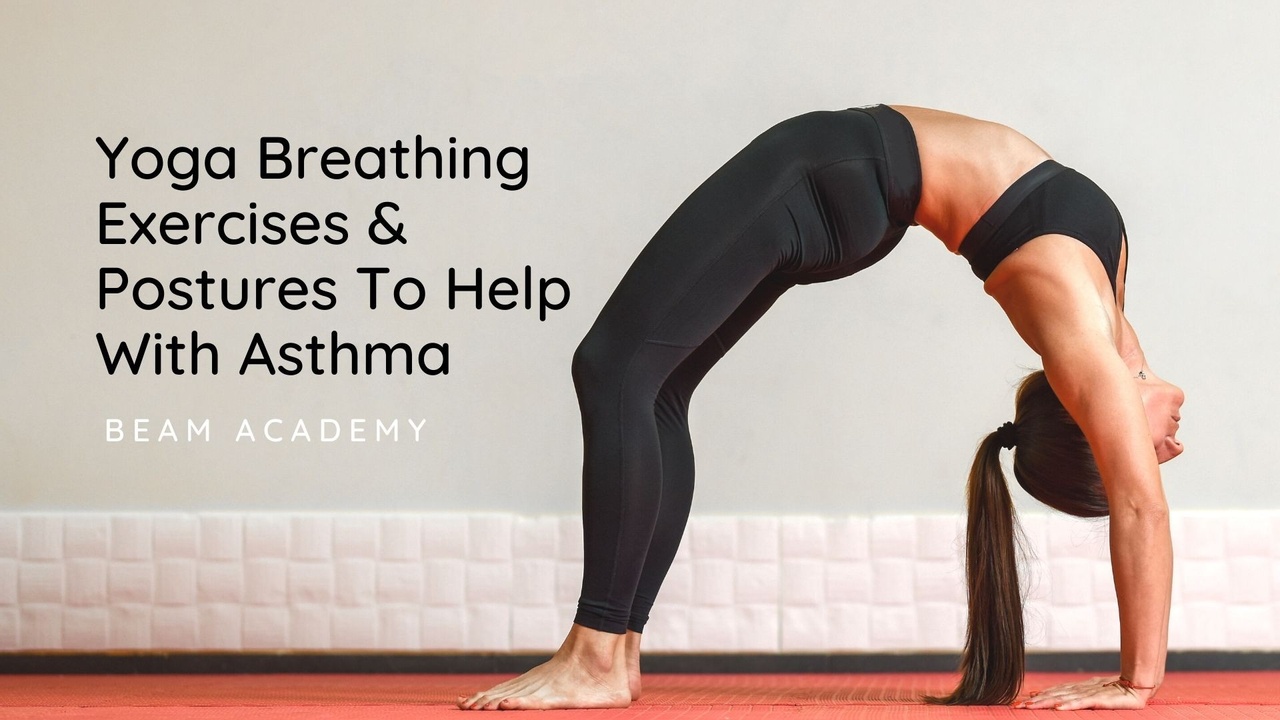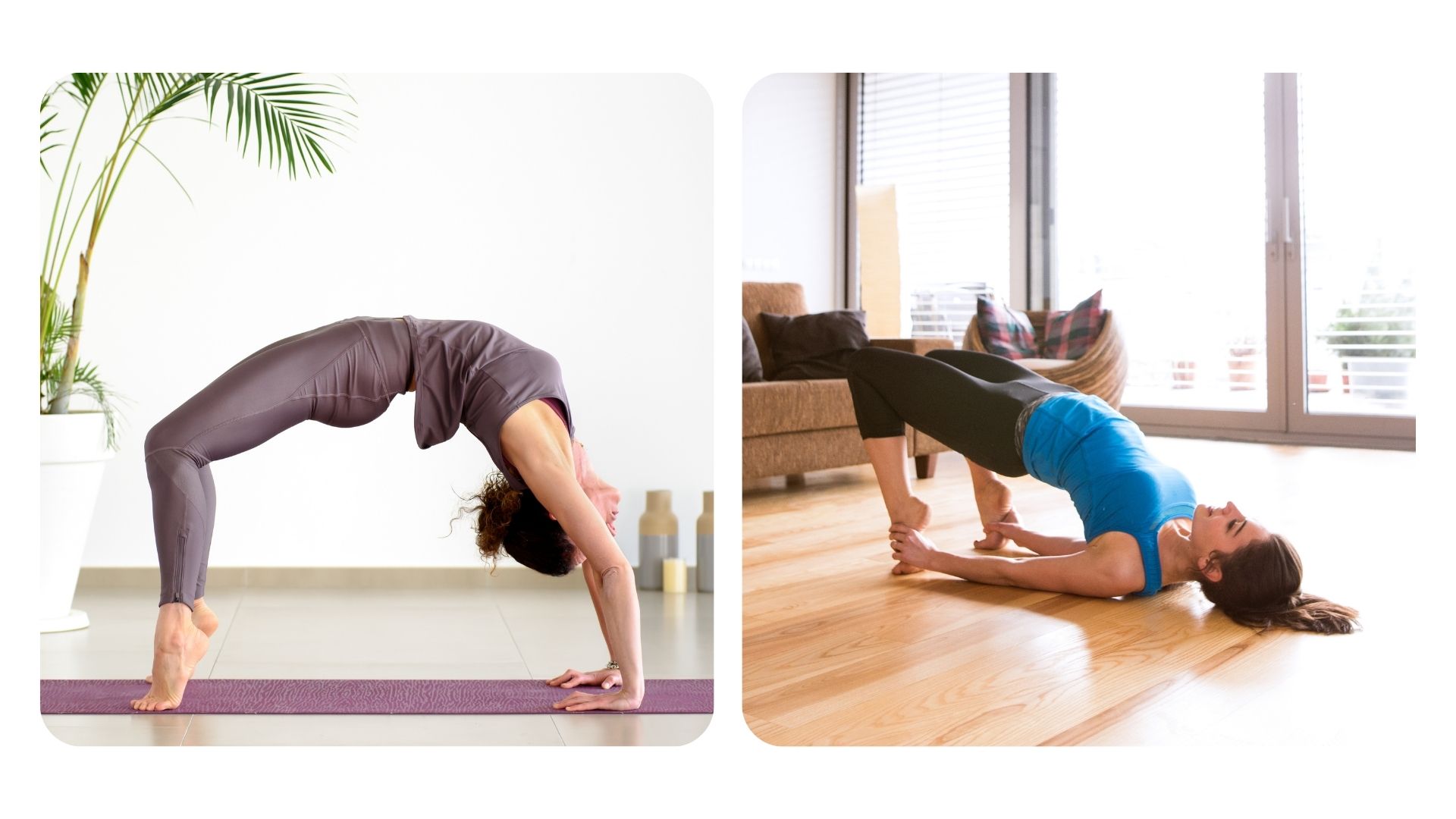Yoga Breathing Exercises & Postures To Help With Asthma
Jul 29, 2021
The actual term asthma is a Greek word that appeared for the first time in the Iliad, with the meaning of a short-drawn breath, but the earliest text where the word is found as a medical term is the Corpus Hippocraticum.
Asthma is a chronic lung disease caused by inflammation of the tubes that carry air in and out of the lungs, resulting in the classic symptoms of wheezing, chest tightness, coughing, and shortness of breath.
It has been connected to hereditary factors, allergens, and environmental variables, and can sometimes be triggered by things like allergies or smoke albeit the exact aetiology varies across individuals. Although asthma frequently develops in childhood, it can strike anyone at any age. While some children appear to outgrow asthma, it is more persistent in adults.
Many people, not only asthmatics, tend to breathe in a dysfunctional and inefficient manner. Improving their breathing patterns can boost oxygen delivery to their tissues, reduce stress, and induce muscular relaxation, all of which are beneficial for everyone but especially for someone with asthma.
Common dysfunctional breathing habits in people with asthma
1. Chest breathing: With chronic chest breathing, the diaphragm, like any other muscle, can become weak, worsening the condition. A slumping posture, common in modern society also contributes to chest breathing by pushing the lower ribs into the upper abdomen. This limits the movement of the diaphragm, the large dome shaped sheet of muscle beneath the lungs, which ought to be the primary muscle of respiration, so the chest and sometimes the neck muscles takeover.
2. Breath holding: This is an unconscious tendency to hold the breath after the inhalation. Pressure builds up, making it even harder to exhale in a relaxed fashion. This is stressful and if done chronically may put additional strain on the heart and lungs.
3.Mouth breathing: Mouth breathers inhale and exhale through their mouths. They breathe more rapidly, as the mouth presents less restriction to air flow than the nasal passages, and they forego the nose's benefits of warming, filtering, and humidifying incoming air. Also breathing through the mouth tends to dry the throat.
4. Inhalations stronger than exhalations: Most people with asthma find it more difficult to exhale with ease than inhale, and the wheezing characteristic of the disease happens primarily on the out breath.
5.Over breathing: Over breathing is a tendency to hyperventilate as asthmatics often have abnormally high respiratory rates. If normal is 12 breaths per minute they might breathe at two or three more times that rate. They may take in plenty of oxygen but at the expense of exhaling more carbon dioxide than is healthy.
In yoga, you learn to engage the abdominal muscles as you exhale, squeezing additional air out of the lungs. This and improved posture allow more air to be taken in on the subsequent breath. Studies show that yoga can both increase lung capacity and the volume and efficiency of the exhalation.
Although there is no medical proof that yoga can treat Asthma, what it can teach you, is how to control your breathing and reduce stress, a common trigger of asthma symptoms. Many people with asthma report feeling better by doing yoga. It’s said that yoga may help by improving posture and opening the chest muscles, which encourages better breathing.
A number of yoga breathing exercises and postures can assist. So here are a few breaths and postures.
- Diaphragmatic breathing: Start by lying on the floor. Make yourself comfortable and place your hands on the belly. Close your eyes and bring your full awareness to your breath. Take a deep inhale through the nose, feeling the belly expand and then gently exhale through pursed lips, allowing the exhalation to last slightly longer than the inhalation and allowing your belly to drop as the breath flows out. Try and keep your chest still during this breathing exercise and avoid taking the tension into the shoulders, especially on the inhalation.
- Space breathing: This exercise is designed to help regulate the CO2 levels in the body. The idea is to pause before your next inhalation. Someone who tends to breathe fast may find this one tricky but you can slowly build your way up. So, find a comfortable position either sitting upright or lying on the floor. Inhale for the count of 2 and exhale for the count of 3 – 4 and then pause for the count of 1. Inhale for the count of 2 and exhale for the count of 3 – 4 and then pause for the count of 2. Inhale for the count of 2 and exhale for the count of 3 – 4 and then pause for the count of 3. And so on. Try to stay relaxed and enjoy that empty pause between the exhalation and the next inhalation and if you feel the urge to take an extra breath that’s ok.
Some gentle yoga poses that can also relieve asthma symptoms by opening your chest muscles are:

Bridge Pose:
The bridge is a classic yoga pose that opens your chest and encourages deeper breathing.
- Lie on your back. Place your feet shoulder-width apart, knees bent. Place your hands on the floor, palms facing down.
- Inhale and move your pelvis up, keeping your shoulders and head flat. Take a few deep breaths.
- Slowly lower your pelvis to the floor.

Cobra Pose expands your chest muscles and also promotes blood circulation, which supports better breathing.
- Start on your stomach. Place your palms on the floor beneath your shoulders, fingers spread wide and facing forward. Straighten your legs behind you, hip-width apart.
- Press your pelvis into the floor. Press into your hands and lift your upper body, keeping your hips still and your elbows close to the ribcage. Roll your shoulders back and keep your chin parallel to the floor so that the back of your neck stays elongated. Hold for 15 to 30 seconds.
- Lower your upper body to starting position.
If you feel anxious, nauseous, or short of breath while doing any of the above exercises, STOP. Get up and walk around. Always check in with your doctor before you introduce any type of exercise.
Sign Up For Our Monthly Newsletter
Receive monthly emails with news, blogs and articles about teacher training courses, yoga, mindfulness, education and so much more.
We hate SPAM. You'll only get quality content.

